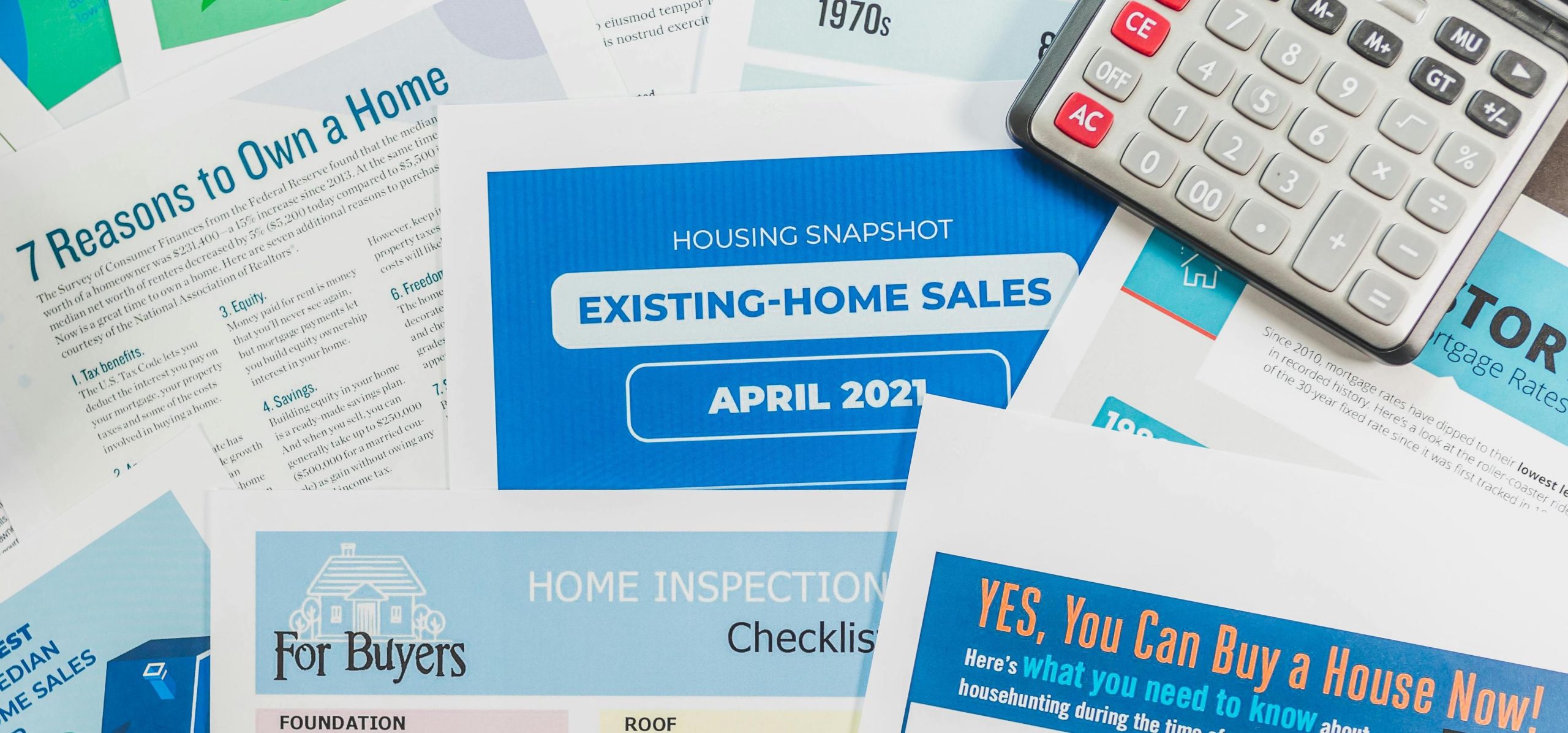The Blue Crab Festival

A Four Point Inspection vs. A “Regular” Home Inspection

-
Roof: How old is it? Any leaks, missing shingles, or signs it’s on its last legs? A roof past 15-20 years might raise eyebrows.
-
Electrical: Is the wirin’ up to snuff? Any sketchy old knob-and-tube or aluminum wirin’? Are the panels modern, or are they a fire waitin’ to happen?
-
Plumbing: Are the pipes solid, or are they rusty old things ready to spring a leak? They’ll check for polybutylene pipes too—those are troublemakers from way back.
-
HVAC: Is the furnace or AC wheezin’ like an old hound dog, or is it still kickin’ strong? They’ll look at age, condition, and maintenance.
-
Insurance Approval: A clean four-point report can mean smooth sailin’ for gettin’ coverage. If the roof’s shot or the wirin’s a mess, though, the insurer might say, “Fix it first,” or worse, “Sorry, no deal.” In some cases, they’ll offer coverage but slap on a premium that’ll make your wallet wince.
-
Savin’ You Grief: Even if insurance wasn’t in the picture, this inspection’s a heads-up about big-ticket repairs you might not’ve spotted. Findin’ out your AC’s about to quit before you buy beats sweatin’ through a summer with no cool air and a $10,000 bill.
-
Negotiatin’ Power: If the inspection turns up issues, you might use ‘em to haggle with the seller—maybe get ‘em to fix the roof or knock a bit off the price. It’s like findin’ a dent in a used car before you sign the papers.
-
Peace of Mind: Knowin’ the house’s vital organs are in decent shape lets you sleep easier, ‘specially if you’re pourin’ your savings into a fixer-upper.
-
Scope:
-
Regular Home Inspection: This is the deep dive. It covers the foundation, walls, ceilings, floors, windows, doors, attic, crawlspace, insulation, appliances, drainage, and yeah, the roof, electrical, plumbing, and HVAC too. It’s like a detective combing every inch for clues—cracks in the slab, mold in the basement, even if the garage door sticks. It might take 2-4 hours (or more for a big house) and comes with a beefy report, sometimes 20-50 pages long.
-
Four-Point Inspection: This one’s laser-focused. It only cares about the roof, electrical, plumbing, and HVAC—nothin’ else. No checkin’ the foundation, no peekin’ at the chimney, no worryin’ about that funky smell in the laundry room. It’s usually done in under an hour, and the report’s short—think a few pages with some pics and checkboxes.
-
-
Purpose:
-
Regular Home Inspection: It’s for you, the buyer (or sometimes seller), to know the house inside and out before you commit. It’s about avoidin’ surprises, like findin’ out the basement floods every spring or the windows are all shot. You use it to decide if the house is worth the price or if you need to renegotiate.
-
Four-Point Inspection: This one’s for the insurance company (though it benefits you too). It’s about provin’ the house’s core systems won’t cost them a fortune in claims. You might not even need one if your home’s newer or your insurer doesn’t ask, but for older homes, it’s non-negotiable.
-
-
Cost:
-
Regular Home Inspection: These run $300-$600 or more, dependin’ on the house’s size, location, and extras like radon or mold tests. It’s pricier ‘cause it’s so thorough.
-
Four-Point Inspection: This’ll set you back $75-$200, usually. It’s cheaper since it’s quick and narrow—less time, less paper.
-
-
Who Orders It?:
-
Regular Home Inspection: You, the buyer, typically order this during the inspection period after your offer’s accepted. It’s your chance to kick the tires before you’re locked in.
-
Four-Point Inspection: Often, your insurance agent or lender tells you to get one when you apply for a policy. Sometimes sellers get it done to make the house more appealing, but usually, it’s on you as the buyer.
-
-
Depth:
-
Regular Home Inspection: It’s nitty-gritty. The inspector might climb into the attic, crawl under the house, or test every outlet. They’ll flag little stuff too, like a loose handrail or a drippy faucet.
-
Four-Point Inspection: It’s more big-picture for those four systems. The inspector checks if they’re functional and safe but won’t sweat the small stuff—like, they’ll note if the AC’s ancient but won’t care if the thermostat’s finicky.
-
-
Outcome:
-
Regular Home Inspection: You get a detailed report to guide your decision—buy, walk away, or ask for repairs. It’s your ammo for negotiatin’ with the seller.
-
Four-Point Inspection: You get a pass/fail vibe for insurance. If the systems are good, you’re golden. If not, you might need to fix things (like replacin’ a 30-year-old roof) or shop for a different insurer.
-
Palatka, The Center of A Wheel

Credit Score Impact Pt.3

-
Applying for a Mortgage: Multiple hard inquiries within 14–45 days (rate shopping) count as one, dropping your score by 5–10 points temporarily.
-
After Approval: Timely mortgage payments boost your score over time (payment history is 35% of FICO).
-
Default Risk: Missed payments tank your score, and foreclosure can drop it by 100–150 points, lingering for 7 years.
-
Improve Score Pre-Application: Pay down debt, avoid new credit, correct report errors (check via AnnualCreditReport.com).
-
Co-Signer: Adds their score/income to the application (conventional/VA/FHA).
-
Alternative Financing: Seller financing, rent-to-own, or hard money loans bypass traditional score hurdles.
-
Down Payment Assistance: Boosts approval odds for lower scores (check state/local programs).
-
760+: Best rates, terms, and flexibility across all options.
-
620–759: Viable for most loans, but costs rise as scores drop.
-
Below 620: Limited to FHA, VA (if eligible), or non-traditional methods; expect higher rates and hurdles.
Credit Score Impact Pt.2

-
General Rule: Higher scores = lower rates; lower scores = higher rates.
-
Example (Conventional 30-Year Fixed, March 2025 Rates):
-
760+: 6.0% APR
-
700–759: 6.2% APR
-
620–699: 6.8% APR
-
Below 620: Often ineligible or 7%+ with added fees.
-
-
Cost Difference: On a $300,000 loan, a 1% rate increase adds ~$200/month or $72,000 over 30 years.
-
Institutions: Online lenders and credit unions may offer better rates for high scores; brokers can shop for deals across score ranges.
Impact on Down Payment-
Higher Scores: Lenders may accept smaller down payments (e.g., 3% for conventional loans with 720+).
-
Lower Scores: Require larger down payments (e.g., 10% for FHA with 500–579) or PMI, increasing upfront and ongoing costs.
-
Exceptions: VA/USDA loans (0% down) are less score-dependent but still favor higher scores for approval.
Impact on Loan Approval Process-
High Scores (700+): Faster approvals, fewer conditions, less documentation scrutiny.
-
Moderate Scores (620–699): Approvable but may need extra proof of income, debt explanations, or reserves.
-
Low Scores (<620): Manual underwriting (if allowed) or rejection; alternative options like FHA or seller financing become critical.
Impact by Institution-
Commercial Banks: Strictest standards; favor 700+ for best terms.
-
Credit Unions: More lenient for members; may work with 600+ scores.
-
Mortgage Lenders/Brokers: Vary widely; some specialize in subprime (below 620) loans with higher rates.
-
Online Lenders: Often prioritize scores but use algorithms to approve 620+ quickly.
-
Community Banks: Flexible for local clients; may overlook moderate scores with strong ties.
-
Credit Score Impact Pt. 1

-
Range: Credit scores typically range from 300 to 850 (FICO or VantageScore models).
-
Key Factors: Payment history (35%), credit utilization (30%), length of credit history (15%), new credit (10%), and credit mix (10%).
-
Minimums: Lenders set minimum score requirements, varying by loan type and institution.
Impact on Mortgage Eligibility-
Conventional Loans
-
Minimum Score: Typically 620–660, though 740+ gets the best terms.
-
Impact: Below 620, approval is rare without a co-signer or larger down payment. Scores below 700 may require private mortgage insurance (PMI) if the down payment is less than 20%.
-
Institutions: Commercial banks, credit unions, mortgage lenders.
-
-
FHA Loans
-
Minimum Score: 580 for 3.5% down; 500–579 for 10% down.
-
Impact: Designed for lower scores, but below 500, options vanish. Higher scores still reduce interest rates and PMI costs.
-
Institutions: FHA-approved lenders (banks, credit unions, non-bank lenders).
-
-
VA Loans
-
Minimum Score: No official minimum (set by lenders, often 620–660).
-
Impact: Flexible for veterans; poor credit may still qualify with strong income or compensating factors.
-
Institutions: VA-approved lenders.
-
-
USDA Loans
-
Minimum Score: Typically 640, though some lenders allow lower with manual underwriting.
-
Impact: Below 640, approval is harder; higher scores streamline the process.
-
Institutions: USDA-approved lenders.
-
-
Seller Financing
-
Minimum Score: No strict requirement; depends on the seller.
-
Impact: Credit score matters less since it’s a private deal, but sellers may still check it to assess risk.
-
Institutions: N/A (direct with seller).
-
-
Hard Money Loans
-
Minimum Score: Often irrelevant; focus is on property value.
-
Impact: Bad credit doesn’t disqualify you, but rates (10-15%+) are high regardless.
-
Institutions: Hard money lenders.
-
-
Rent-to-Own
-
Minimum Score: Varies by agreement; often no initial check.
-
Impact: Credit isn’t a barrier to start, but you’ll need a decent score later to secure a mortgage.
-
Institutions: Property owner or management company.
-
-
Understanding Credit Score Basics

-
Payment History (35%)
-
What It Means: This is the biggest factor. It tracks whether you pay your bills on time. Late payments, missed payments, defaults, or bankruptcies can lower your score significantly.
-
How It Impacts You: A single late payment can drop your score by dozens of points, and negative marks like collections can linger for years.
-
What You Can Do: Pay all bills on time. Set up reminders or automatic payments to avoid slip-ups.
-
-
Credit Utilization (30%)
-
What It Means: This is the ratio of your current credit card balances to your credit limits. For example, if your limit is $10,000 and you’re using $4,000, your utilization is 40%.
-
How It Impacts You: High utilization (above 30%) suggests you’re over-relying on credit, which can hurt your score.
-
What You Can Do: Keep balances low. Aim to use less than 30% of your available credit—e.g., under $3,000 on a $10,000 limit.
-
-
Length of Credit History (15%)
-
What It Means: This measures how long you’ve had credit accounts open. Older accounts generally boost your score.
-
How It Impacts You: Closing an old account shortens your history, potentially lowering your score.
-
What You Can Do: Keep older accounts open, even if you don’t use them, as long as there’s no annual fee.
-
New Credit (10%)
-
What It Means: This reflects recent applications for credit. Opening several new accounts in a short time can signal financial trouble.
-
How It Impacts You: Each application may trigger a “hard inquiry,” which can ding your score by a few points temporarily.
-
What You Can Do: Apply for new credit only when necessary and space out applications.
-
-
Credit Mix (10%)
-
What It Means: This looks at the variety of credit types you have—like credit cards, mortgages, or installment loans.
-
How It Impacts You: A diverse mix can help your score, but only if managed well.
-
What You Can Do: Maintain different credit types responsibly, but don’t take on unnecessary debt just to diversify.
-
-
Public Records and Collections
-
What It Means: Events like bankruptcies, foreclosures, or accounts sent to collections are major red flags.
-
How It Impacts You: These can tank your score and stay on your credit report for 7-10 years.
-
What You Can Do: Avoid these by managing debt carefully. Seek help (e.g., credit counseling) if you’re struggling.
-
-
-
Everything You Need To Know About Mortgage Loans Part 3

-
Definition: Mortgages that exceed the conforming loan limits set by the Federal Housing Finance Agency (FHFA) (e.g., $766,550 in most U.S. areas in 2025, higher in high-cost regions).
-
Key Features:
-
Used for expensive properties.
-
Stricter credit, income, and down payment requirements (often 10%-20% down).
-
Can be fixed or adjustable-rate.
-
-
Advantages:
-
Allows financing for luxury homes or properties in high-cost markets.
-
-
Disadvantages:
-
Higher interest rates and larger down payments.
-
Harder to qualify due to stringent standards.
-
-
Best For: High-income buyers purchasing expensive homes.
-
Definition: A loan where the borrower pays only the interest for an initial period, after which payments increase to include principal.
-
Key Features:
-
Lower initial payments during the interest-only period (e.g., 5-10 years).
-
After the period ends, payments rise significantly as principal repayment begins.
-
Often structured as an ARM.
-
-
Advantages:
-
Lower early payments can free up cash flow.
-
Useful for short-term ownership or investment properties.
-
-
Disadvantages:
-
No equity buildup during the interest-only phase.
-
Sharp payment increases later.
-
-
Best For: Investors or buyers with irregular income expecting a future financial boost
Balloon Mortgage
-
Definition: A loan with low monthly payments for a short term (e.g., 5-7 years), followed by a large “balloon” payment to pay off the remaining balance.
-
Key Features:
-
Fixed or adjustable rates.
-
Requires refinancing or selling the home to cover the balloon payment.
-
-
Advantages:
-
Low payments during the term.
-
Can work for short-term homeowners.
-
-
Disadvantages:
-
Risk of inability to refinance or sell when the balloon payment is due.
-
High final payment.
-
-
Best For: Borrowers planning to move or refinance before the balloon payment.
Reverse Mortgage
-
Definition: A loan for homeowners (typically 62+) that allows them to convert home equity into cash without selling the home.
-
Key Features:
-
No monthly mortgage payments; the loan is repaid when the homeowner sells, moves out, or passes away.
-
Loan amount based on age, home value, and equity.
-
Interest accrues over time, reducing equity.
-
-
Advantages:
-
Provides income for retirees.
-
Allows staying in the home.
-
-
Disadvantages:
-
High fees and interest costs.
-
Reduces inheritance for heirs.
-
-
Best For: Seniors needing supplemental income in retirement.
Everything You Need To Know About Mortgage Loans Part 2

The following are the 3 mortgage loan programs tied to the Federal Government, as opposed to conventional loans that originate from the private sector.
1. FHA Loans (Federal Housing Administration)
-
Definition: Government-backed loans insured by the FHA, designed to help low- to moderate-income borrowers.
-
Key Features:
-
Low down payment requirement (as little as 3.5% with a credit score of 580+).
-
More lenient credit and income requirements.
-
Requires mortgage insurance premiums (MIP) for the life of the loan in most cases.
-
-
Advantages:
-
Accessible to first-time buyers or those with lower credit scores (as low as 500 with 10% down).
-
Competitive interest rates.
-
-
Disadvantages:
-
MIP increases overall cost.
-
Loan limits vary by county.
-
-
Best For: First-time homebuyers or those with limited savings or credit challenges.
-
Definition: Loans guaranteed by the Department of Veterans Affairs for eligible veterans, active-duty service members, and surviving spouses.
-
Key Features:
-
No down payment required (0% down).
-
No private mortgage insurance (PMI) needed.
-
Competitive rates and flexible credit guidelines.
-
Funding fee (1.25%-3.3%) applies, which can be rolled into the loan.
-
-
Advantages:
-
Significant cost savings due to no down payment or PMI.
-
Easier qualification for eligible borrowers.
-
-
Disadvantages:
-
Limited to VA-eligible borrowers.
-
Funding fee adds to the loan balance.
-
-
Best For: Military personnel and their families seeking affordable homeownership.
-
Definition: Government-backed loans to promote homeownership in rural and suburban areas.
-
Key Features:
-
0% down payment option.
-
Income limits apply (typically for low- to moderate-income borrowers).
-
Property must be in a USDA-eligible rural area.
-
Requires mortgage insurance (upfront and annual fees).
-
-
Advantages:
-
No down payment makes it affordable.
-
Competitive rates for qualifying areas.
-
-
Disadvantages:
-
Geographic and income restrictions.
-
Not available for urban properties.
-
-
Best For: Buyers in rural areas with limited funds for a down payment.
Everything You Need To Know About Mortgage Loans Part 1

-
Definition: Loans not backed by a government agency, typically conforming to Fannie Mae or Freddie Mac guidelines.
-
Key Features:
-
Down payments range from 3% to 20%.
-
PMI required if down payment is less than 20%.
-
Fixed or adjustable rates available.
-
-
Advantages:
-
Flexible terms and no government-specific restrictions.
-
PMI can be canceled once 20% equity is reached.
-
-
Disadvantages:
-
Stricter credit and income requirements than government-backed loans.
-
Higher down payment than FHA/VA/USDA options.
-
-
Best For: Borrowers with strong credit and financial stability.
Conventional loans normally come in two variations:
-
Definition: A mortgage with an interest rate that remains constant throughout the entire loan term.
-
Key Features:
-
Monthly payments (principal and interest) stay the same, providing predictability and stability.
-
Common terms are 15, 20, or 30 years (30-year being the most popular).
-
-
Advantages:
-
Protection against rising interest rates.
-
Easier budgeting due to consistent payments.
-
-
Disadvantages:
-
Higher initial interest rates compared to adjustable-rate mortgages (ARMs).
-
Less flexibility if market rates drop (refinancing would be required to lower the rate).
-
-
Best For: Borrowers who plan to stay in their home long-term and prefer payment certainty.
-
Definition: A mortgage with an interest rate that changes periodically based on a financial index (e.g., SOFR or LIBOR).
-
Key Features:
-
Starts with a fixed-rate introductory period (e.g., 5, 7, or 10 years), then adjusts annually or semi-annually.
-
Rate adjustments are capped (e.g., 2% per adjustment, 5% over the loan’s life).
-
Payments can increase or decrease after the initial period.
-
-
Advantages:
-
Lower initial rates and payments compared to fixed-rate mortgages.
-
Potential savings if interest rates drop over time.
-
-
Disadvantages:
-
Risk of higher payments if rates rise.
-
Uncertainty makes budgeting harder after the fixed period ends.
-
-
Best For: Borrowers who plan to sell or refinance before the adjustable period begins or expect rates to stay


 Facebook
Facebook
 X
X
 Pinterest
Pinterest
 Copy Link
Copy Link